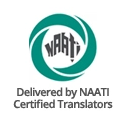
Sundanese language, locally called basa Sunda, has 32 million speakers in Indonesia. That’s roughly 15% of the country’s population, concentrated in the western third of Java. It belongs to the Austronesian language family, sharing ancestry with languages spoken across Southeast Asia and the Pacific Islands, like Hawaiian and Malagasy.
Origins and Evolution
The exact origins of Sundanese remain under debate, but most linguists believe it developed around the 14th century from Old Sundanese. Inscriptions discovered in the Kawali region provide evidence for this early form. Old Sundanese gradually evolved into Classical Sundanese, used from the 15th to the 19th centuries. This period witnessed a golden age of Sundanese literature and cultural expression. Today, most Sundanese speakers use Modern Sundanese, a dialect that emerged in the 19th century and continues to develop.
Dialects and Writing Systems
Due to the geographical spread of speakers, there are several Sudanese dialects. The Priangan dialect from West Java is considered the standard form, but regions like Banten and Cirebon have their own unique variations. Interestingly, some Sundanese communities even speak Baduy, a separate language closely related to Sundanese.
Sundanese Writing Systems through the Ages
The writing system used for Sundanese has undergone a fascinating evolution throughout history. In ancient times, dating back to the 14th to 18th centuries, Sundanese was written using scripts derived from India, such as Pallava, Kawi, and Buda. These scripts utilized characters similar to those found in Devanagari, the script used for Hindi and Sanskrit.
Over time, a new script specifically for Sundanese emerged, known as Aksara Sunda. This script, developed in the 17th century, is based on the old Sundanese script but with some modifications. Aksara Sunda is an abugida, meaning each character represents a consonant and an inherent vowel sound. Additional diacritics are used to modify the inherent vowel sound or add extra vowels.
While Aksara Sunda is used for some religious texts and cultural preservation efforts, the dominant writing system for everyday Sundanese is the Latin alphabet with additional diacritics. This adaptation, introduced in the 20th century, proved more practical for wider literacy and communication in the modern world.
Grammar Reflecting Respect
Sundanese grammar features a nuanced system of politeness levels, reflecting social hierarchy. Historically, there were six levels: basa kasar (rough), sedeng (medium), lemes (polite), lemes pisan (very polite), kasar pisan (very rough), and basa panengah (intermediate). However, current classifications simplify this to two main categories: basa hormat (respectful) and basa loma (fair). Additionally, a very informal level, cohag, exists for specific situations.
Basa loma serves as the standard for written Sundanese, appearing in magazines, newspapers, and literature. This level is considered neutral and familiar. Basa hormat, used for showing respect, employs more elaborate verb conjugations. Interestingly, within the lemes level, there’s a further distinction between humble and respectful forms. This intricate system ensures respectful communication tailored to the social context and the speaker’s relationship with the listener.
At TranslateSwift, we celebrate the beauty and complexity of languages like Sundanese. Our team of expert linguists is here to bridge the communication gap, offering translation services that prioritize accuracy and cultural sensitivity.
Other Languages
- English
- Spanish
- German
- Dutch
- French
- Italian
- Afrikaans
- Albanian
- Amharic
- Arabic
- Armenian
- Azerbaijani
- Basque
- Belarusian
- Bengali
- Bosnian
- Bulgarian
- Cantonese
- Catalan
- Cebuano
- Chichewa
- Chinese - Simplified
- Chinese - Cantonese
- Chinese - Traditional
- Chinese - Mandarin
- Corsican
- Croatian
- Creole
- Czech
- Danish
- Dari
- Esperanto
- Estonian
- Farsi
- Filipino
- Finnish
- Frisian
- Galician
- Georgian
- Greek
- Gujarati
- Haitian Creole
- Hausa
- Hawaiian
- Hebrew
- Hindi
- Hmong
- Hungarian
- Icelandic
- Igbo
- Indonesian
- Irish
- Japanese
- Javanese
- Kannada
- Kazakh
- Khmer
- Korean
- Kurdish
- Kyrgyz
- Lao
- Latin
- Latvian
- Lithuanian
- Luxembourgish
- Macedonian
- Malagasy
- Malay
- Malayalam
- Maltese
- Maori
- Marathi
- Mongolian
- Montenegrin
- Myanmar
- Nepali
- Norwegian
- Odia
- Pashto
- Persian
- Polish
- Portuguese
- Punjabi
- Romanian
- Russian
- Samoan
- Scots Gaelic
- Serbian
- Sesotho
- Shona
- Sindhi
- Sinhala
- Slovak
- Slovenian
- Somali
- Sundanese
- Swahili
- Swedish
- Tajik
- Tagalog
- Tamil
- Telugu
- Thai
- Turkish
- Ukrainian
- Urdu
- Uyghur
- Uzbek
- Vietnamese
- Welsh
- Xhosa
- Yiddish
- Yoruba
- Zulu
